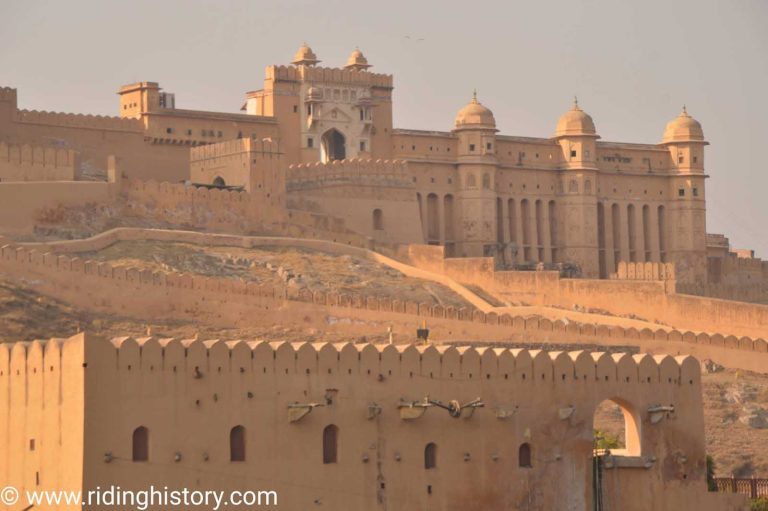50 Tourist Places to Visit in Jaipur 2024 | 50 Places to Visit in Jaipur 2024 | Jaipur Tourist Places 2024 | Jaipur Travel Guide 2024 | Things to do in Jaipur | Best Time To Visit Jaipur | Part-01
Maharaja Sawai Jai Singh of Amer founded the most organized and planned city of that time on 18 November 1727, 287 years ago and today this beautiful city is famous as Jaipur, the capital of Rajasthan. The city has been named Jaipur after Jaipur founder Sawai Jai Singh.
Jaipur is currently the largest centre of tourism not only in Rajasthan but all over India. You can guess the fame of Jaipur only by the fact that the number of domestic and foreign tourists visiting this capital of Rajasthan is more than 20 lakhs every year. Every tourist visiting here spends an average of Rs. 1300 per day.
Apart from tourism, blue pottery, handblock printing, handicrafts, and jewellery are some of the traditional industries of this city, due to which Jaipur has established a distinct identity in the whole world today.
Jaipur City is famous as Pink City and inside the city, you get a glimpse of rural and modern surroundings, Jaipurites living inside the boundary wall still like to live in the old way and the new one is situated outside the boundary wall Jaipur sees you completely moulded in the colours of modern life.
There was a time when Jaipur used to be under the princely state of Amer, but today the identity of Jaipur has become so great that Amer is known as the historical heritage of Jaipur city. With time, the city of Jaipur is joining the most developed cities of India today, but at the same time, the city and its residents are still very aware of its historical heritage.
Special attention is paid by the local administration to keep all the places of historical importance in this city safe. In July 2019, Jaipur was given the status of World Heritage City by UNESCO. The city of Jaipur, surrounded on three sides by the Aravalli ranges, is identified by its architecture, pink and red-coloured dholpur stones have been used in large quantities in most of the old houses built inside the boundary walls of the city.
The story of Jaipur called Pink City is very interesting, in 1876 when Queen Elizabeth of England and Crown Prince Albert (Prince of Wales) were coming to Jaipur, Maharaja Sawai Ramsingh decorated the entire Jaipur city in pink. It was from that time that the city of Jaipur came to be known as Pink City.
If you look carefully at the map of India, Delhi, Agra, and Jaipur, then a type of triangle is formed on the map, these three places are called India’s Golden Triangle. At the time of the construction of the city of Jaipur, its security was also taken care of, large walls were built around the city for protection from external invasions, as well as seven doors were made to enter the city and then some time.
After that, the eighth door was called “New Gate”. Modern urban planners count this city among the most settled and planned cities. The architect of Jaipur, Vidyadhar Bhattacharya, is named among India’s most respected architects. Apart from Pink City, Jaipur is also called the Paris of India. One thing related to the Vastu of Jaipur is very famous. It is said that if the Vastu of Jaipur is measured, then there will be no difference of one centimetre in its measurement.
History of Jaipur
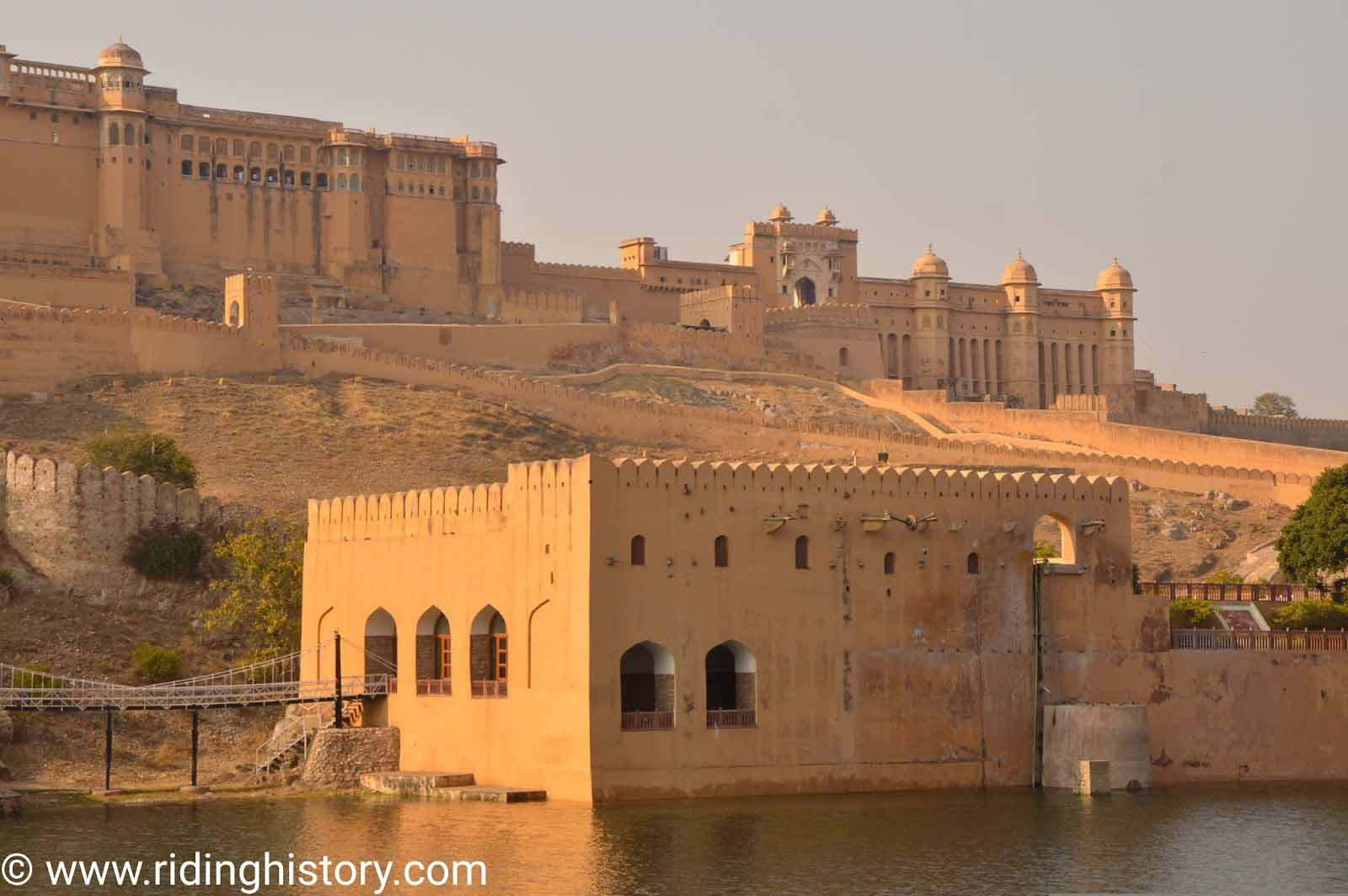
In the 17th century, when the Maratha Empire had expanded almost all over India and the Sultanate of Mughal Sultanate was steadily weakening, it was a time when there was political upheaval all over India, at that time the Amer princely state of Rajputana gradually- Slowly it was gradually emerging as a big force.
The princely state of Amer was ruled by Maharaja Sawai Jai Singh and during his reign, the Maharaja expanded Amer to miles. Due to such a large state, there was a problem in running the Amer princely state in front of Sawai Jai Singh. And because of this Jaipur city came into existence as the new capital of Amer.
There are differences even today among historians regarding the place where the first foundation of the construction of Jaipur was laid. Some historians believe that the foundation for the construction of this city was laid near Shikar Hodi, located near Talkatora.
Some believe that there is a place near Brahmapuri and Amer “Yagyayupa” near which construction of this city started. But all historians believe that Chandramahal, Bazaar, and Teen Chaupar, all these places were built together.
The Marathas were constantly expanding their empire at that time and Maharaja Sawai Jai Singh constructed boundary walls around the city to avoid the Maratha invasion and to ensure the safety of the entire city. Seven strong doors were also constructed to enter the city.
Historians also believe that when the construction of this city started, at that time it was the first city in the country that was being built with complete planning. At the time of the creation of the city of Jaipur, its construction was started keeping in mind the growing population of Amer and the water problem. Construction of the city began in 1727 and it took about 4 years to build the main places of the city.
Jaipur was divided into nine blocks, in which two buildings were built with state buildings and palaces. This entire city has been built based on ancient Indian craftsmanship. The chief architect of this city was Vidyadhar Bhattacharya, a Bengali Brahmin. Vidyadhar Bhattacharya was just an accounting clerk in the Amber court, but he was very interested in architecture.
Impressed by Vidyadhar Bhattacharya, Maharaja Sawai Jai Singh entrusted the entire responsibility of planning the construction of this city. The palace, Havelis, housing of common citizens, gardens and highways have been constructed in a very planned manner in the city. Architecture and geometry have been taken care of at the time of city construction.
To protect the city, the western hill Nahargarh Fort was constructed, and factories were built for making weapons in Jaigarh Fort. The largest Jayaban cannon of that time is still located in the Jaigad Fort. The city of Jaipur is divided into nine residential blocks, these blocks are called Quartets. Ranivas, Rajmahal, Jantar-Mantar, Govinddevji’s temple was built in the largest quartet, the remaining quartet built Havelis, factories, and housing for common citizens.
Sawai Jai Singh considered the people of Amer as his family, so the basic needs of common citizens were taken care of during the construction of the city, such as clear water, small-scale factories, gardens and collecting rainwater. Everything was taken care of at the time of the construction of the city.
Ramanivas Bagh, Hawa Mahal, Isarlat and educational institutions were built at different times in Jaipur and according to the city architecture. Sawai Jai Singh gave great encouragement to handicrafts, education, song music, and employment in Jaipur during his reign. Spread over two hundred square kilometres, Jaipur offers an unmatched example of architecture and architecture.
Amer Fort (Amber Fort)
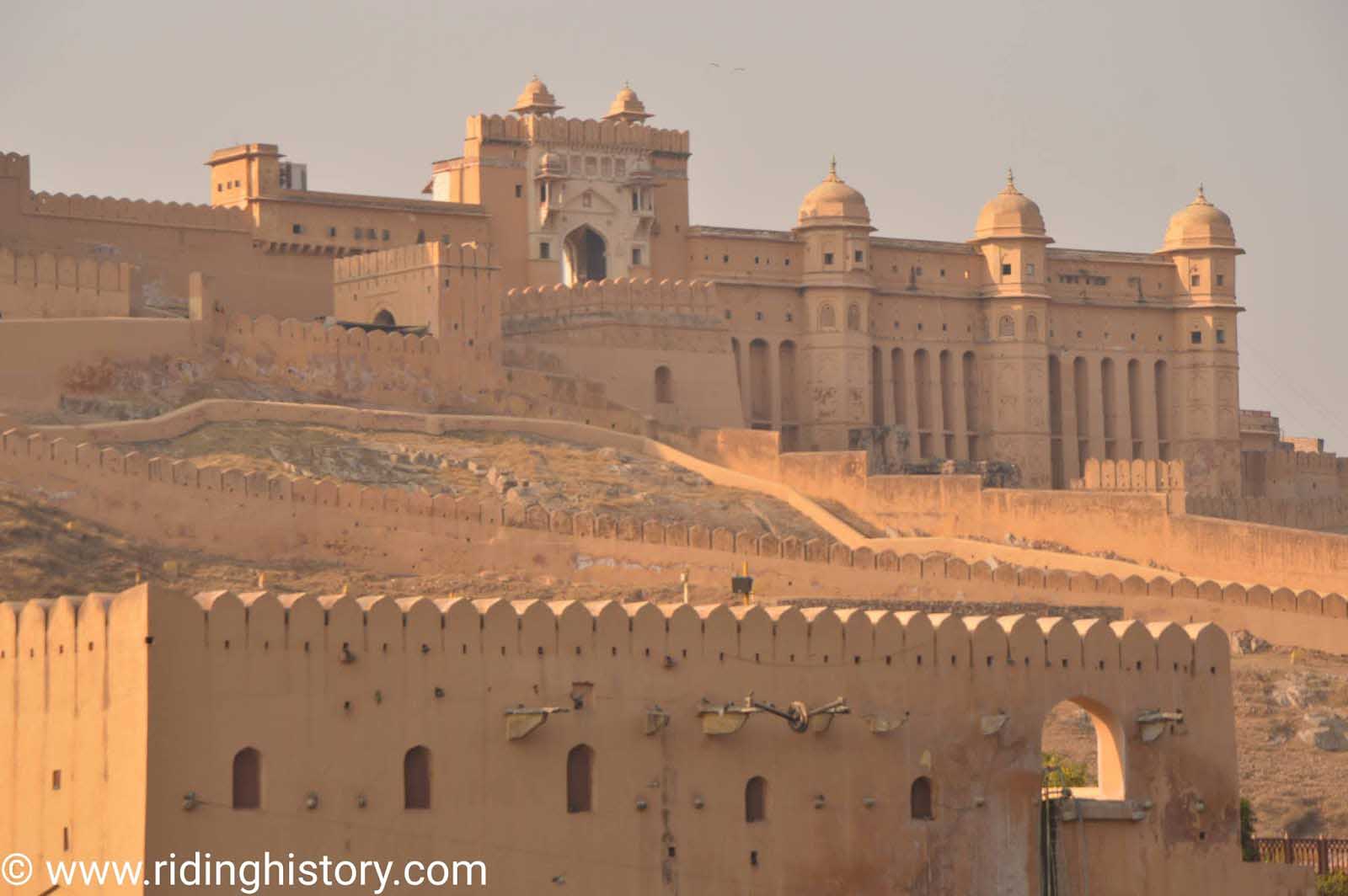
The most famous tourist place in Jaipur is the Amer Fort. Before the Kachhwaha Rajput kings, Amer was ruled by Alan Singh, ruler of the Chanda dynasty in the Meenas. In 967 AD, the old fort of Amer was founded by the king of the Meenas, Alan Singh, and the town of Amer was established, the fort of Amer which is visible at present was built by the Kachhwaha Rajput ruler Sawai Mansingh, built by the Meena rulers. Is carried on the remains of the fort.
After Sawai Mansingh, for 150 years in the Amber Fort, different kings of the Kachhwaha Rajput dynasty improved and expanded the Amber Fort. The Amer Fort is a marvelous example of Hindu architectural style, the walls of the fort have been enlarged in terms of security and many large doors have been built to enter the fort.
Red sandstone and marble have been used in the construction of the fort and this grand fort has been constructed on four levels of the mountain. There are huge courtyards in all four parts of the fort. In which respectively, Diwan-e-Aam, Divan-e-Khas, Sheesh-Mahal and Sukh Niwas are called.
An artificial water stream was constructed to get relief from the scorching heat in Sukh Niwas, water flowed from the water stream during the summer season, due to which the atmosphere of Sukh Niwas remained cool. A secret tunnel was constructed to go from the fort of Amer to the fort of Jaigarh, this tunnel still works well today.
Tourists visiting Amer can still go to Jaigad Fort from this tunnel. The Amber Fort has been constructed in such a way that its image is seen in the Mawtha Lake, built just below the fort. I will put a separate post for the travel guide of Amer Fort.
Shila Devi Temple
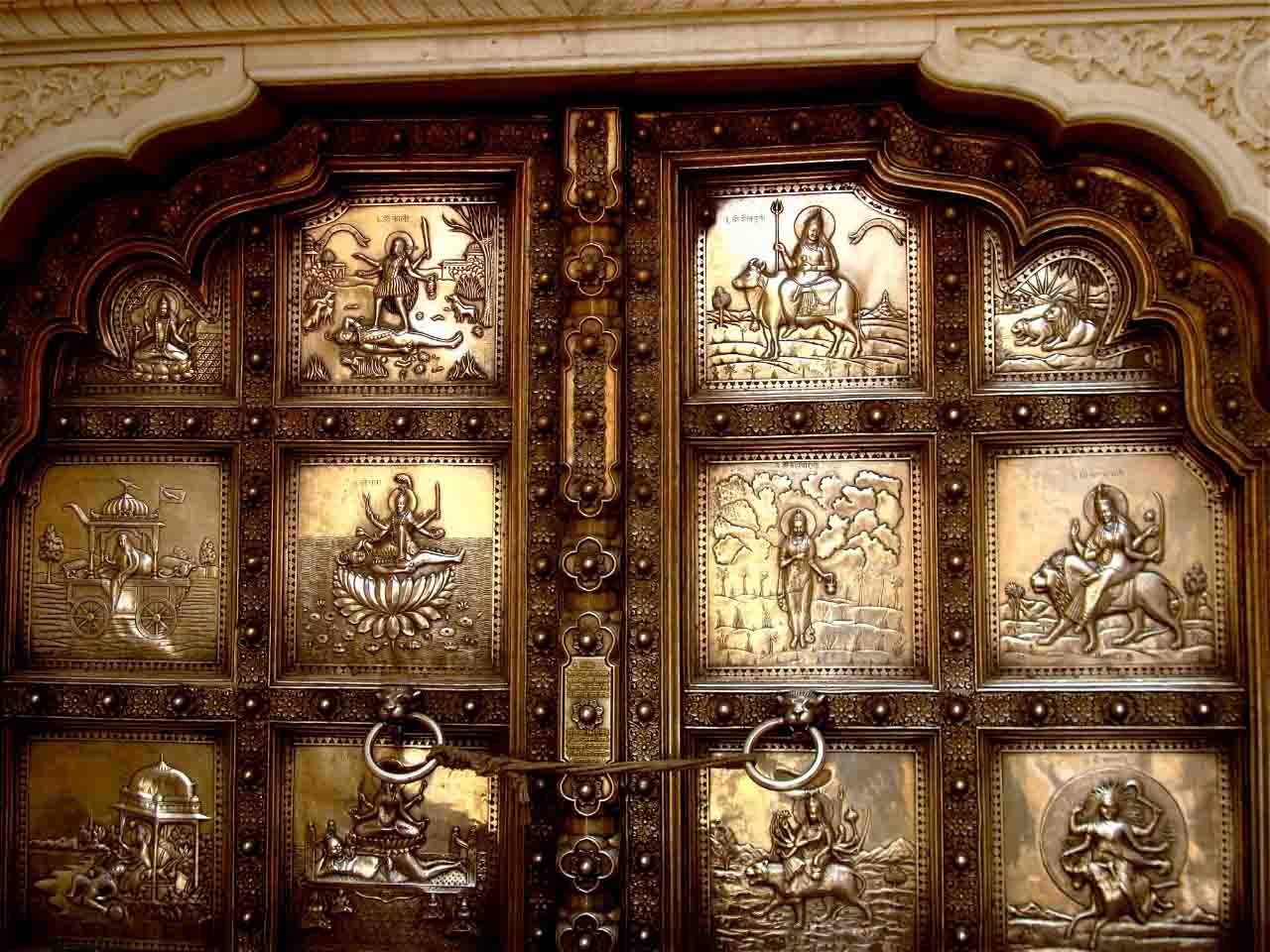
The idol of Shila Devi installed in the Shila Devi temple located in the fort of Amber is considered to be the form of Amba Mata, hence this fort was named Amber (Amer). Shila Devi Temple was established by Kachwaha Rajput King Sawai Mansingh II.
According to residents and the Rajput community, Shila Devi Kachhwaha is the Kuldevi of Rajputs and the royal family. Navratri is very much recognized in Hindu society. And Lakkhi fair is organized in this temple during Navratri. At the time of the fair, this temple is crowded with local and outside devotees. Statues of Lord Ganesha and Kuldevi Hingla Mata of Meenas are also installed near the idol of Shila Devi.
Amer was ruled by the Meenas before the Kachhwaha Rajput kings. The historical temple of Shila Mata is located in Jaleb Chowk of Amer Fort. From Jaleb Chowk one has to climb some stairs to reach the temple. The idol of the mother is built on one rock, which is why she came to be called Shila Devi.
Elephant Village
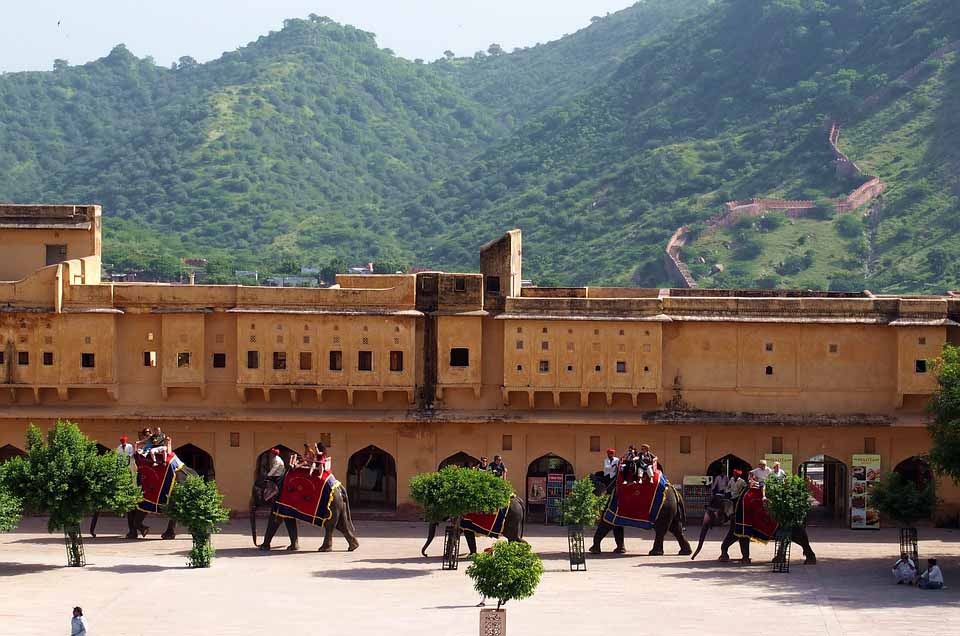
The elephant village, located just 4 km from Amer, was established by the Rajasthan government in 2010 to promote tourism in Jaipur. One of the objectives of the local administration was to provide a natural habitat to a large and magnificent animal like an elephant, as well as to provide proper care and provide proper shelter and food facilities to the families taking care of them.
All the elephants in the Elephant Village have been brought here from South India because Rajasthan is not a natural habitat for elephants and their residents are not residents either. The journey period of Elephant Village can be around 3-4 hours and to make your journey memorable, many programs are done such as colouring the elephants, watching them bathing in their natural habitat and feeding.
Currently, elephant riding is not promoted that much, but if the tourist wants, he can get an opportunity to ride the elephant for a while. Meeting and interacting with the family caring for elephants can be a different experience and it also proves very helpful for tourists to get to know elephants closely.
If you have not been able to ride the elephant at Amber Fort in any way, then riding the elephant in the natural surroundings of Elephant Village will be a different experience for you. I will post a separate post for complete information related to the elephant walking in the village.
Jaigarh Fort Jaipur
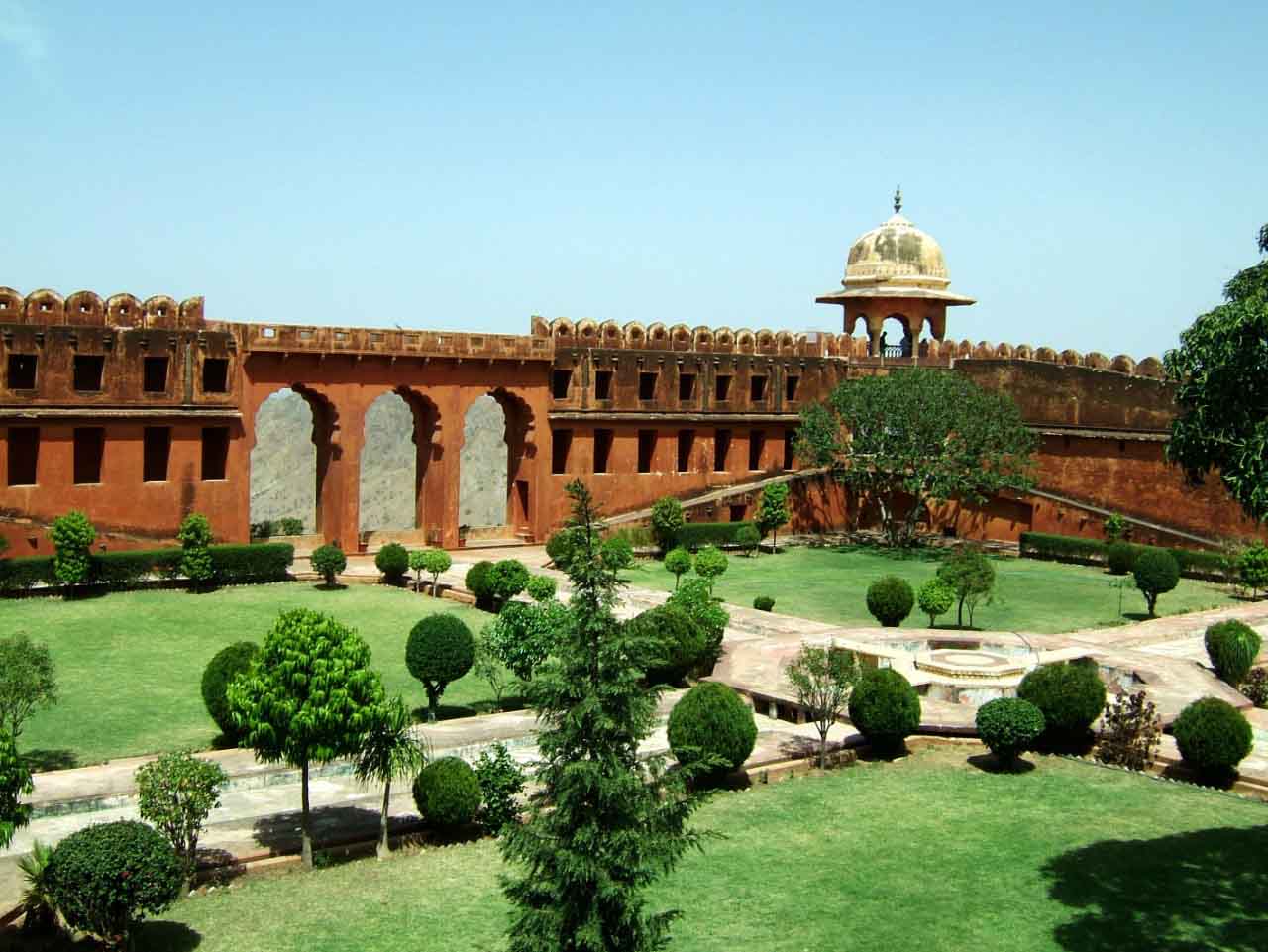
Jaigarh Fort, built in 1667, was built by Mirza King Sawai Jaisingh mainly to protect the Amber Fort and this fort was named Jaigarh after the name of Sawai Jaisingh. This fort is 400 feet higher than the Amber Fort and the mountain on which this fort is built is called the eagle’s mound.
From security, Jaigarh Fort and Amber Fort have been connected to the tunnel, this tunnel is still open for tourists. Jaigarh Fort, one of the famous tourist places of Jaipur is also called the Fort of Vijay. This fort has two entrances called Dungar Darwaza and Avani Darwaja respectively, both these doors are in the south and eastern part of the fort.
After the construction of the Jaigad Fort, complete arrangements were made for the army to stay in it and along with it, factories of arms were also built. A long wall was constructed to protect the fort, which is 3 kilometres in length. Cannon Jayaban was installed in the upper area of the fort, at the earliest of that time. The minimum weight of a Jaiban cannon is believed to be 50 tons and the barrel length of this cannon is 8 meters.
There is also a seven-story building in the fort which is known as Diya Burj, this building gives a very panoramic and beautiful view of the city of Jaipur. The time to see Jaigarh Fort lasts from 9:00 am to 4:30 pm and in 1-2 hours you can see the entire fort. The entrance fee of the fort for domestic tourists is Rs 35 and for foreign tourists, Rs 85 has been set by the local administration. A waiver in admission fees has been provided for students
Nahargarh Fort
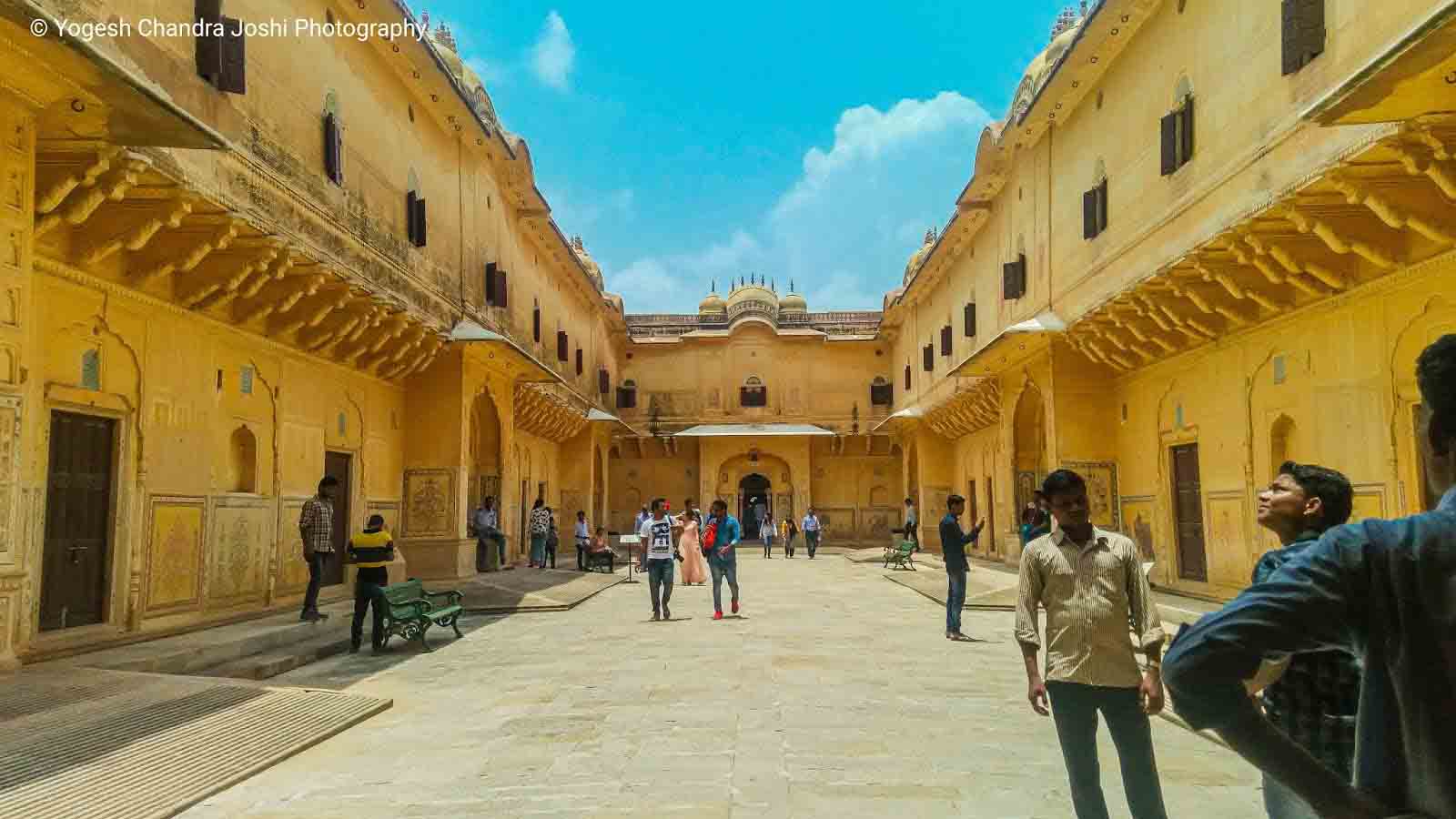
The Nahargarh Fort, built at the end of the Aravalli ranges in the western part of Jaipur was built by Sawai Raja Jai Singh II in 1734 AD with the view of protecting the Amber Fort. There is a fun story behind the naming of Nahargarh Fort, it is believed that the soul of a Rajput named Nahar Singh wanders in this fort and when the construction work of the fort was going on, this spirit caused many obstacles.
Tantrikas were consulted to get rid of this soul and this fort was named Nahargarh on the advice of tantrikas. After Sawai Raja Jai Singh, Sawai Ramsingh and Sawai Madhosingh also built buildings inside the Nahargarh Fort, whose condition is still fine and the old construction which has taken place has deteriorated slightly.
Sawai Raja Ramsingh had nine queens and he made separate accommodation halls for his nine queens, all these houses remain very beautiful. In all these rooms modern facilities of the time were used for toilets. Watching the sunset at dusk from the Nahargarh Fort and seeing the Jaipur city bathed in the light after dark offers a different feeling of joy.
The time to see Nahargarh Fort lasts from 10:00 AM to 5:30 PM. The local administration has set an entry fee of Rs 50 for domestic tourists and Rs 200 for foreign tourists. A waiver in the admission fee has been provided for students.
Jaipur Wax Museum
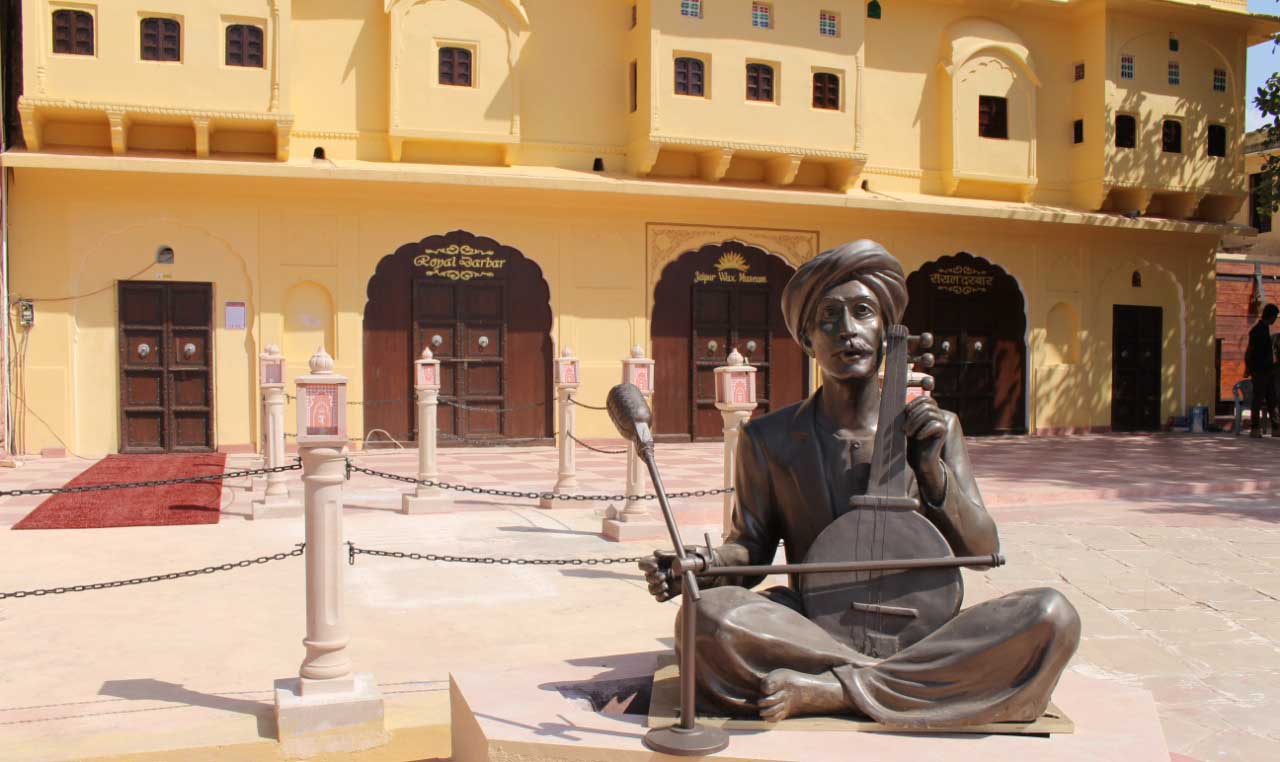
The newly built Jaipur Wax Museum in Jaipur was inaugurated on 17 December 2016 at the Nahargarh Fort. It is the only wax museum in the world that has been established on historical heritage. In a very short time, the Jaipur Wax Museum became a centre of attraction for tourists visiting Nahargarh.
A total of 32 wax statues have been installed inside the museum, including the famous Bollywood actor Amitabh Bachchan. The Jaipur wax museum features world-class statues made of wax from almost all fields such as sports, politics, film actors and scientists. Inside the museum, wax statues of famous cartoon characters and superheroes such as Nobita, Doraemon, Spider-Man, Iron Man, etc. have been made to attract children.
Several wax statues associated with the history and royalty of Jaipur have also been included in this wax museum. The Jaipur Wax Museum is designed keeping in mind tourists of almost all ages. The Sheesh Mahal has been built along with the Wax Museum which has around 2.5 million pieces of glass with the help of 100 artisans. The Jaipur Wax Museum is open from Monday to Friday in the week.
The museum is open for visitors from 10:00 am to 6:30 pm. If you only see the wax museum then the fee is 350 / – INR and with Sheesh Mahal is 500 / – INR.
Panna Meena Ka Kund (Stepwell of Panna Meena)
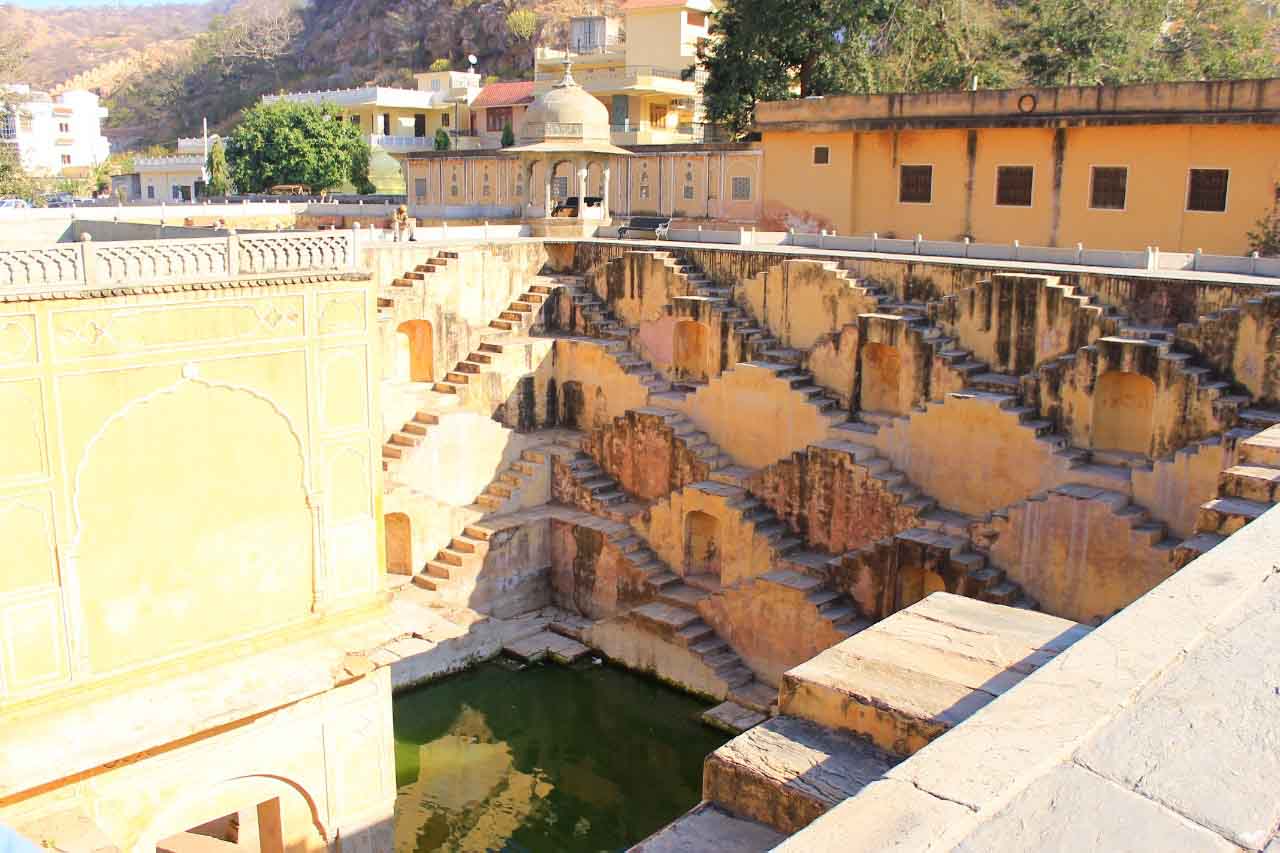
Almost all the tourists visiting Jaipur do not know anything about this place. It is located just a short distance from the Amber Fort. Panna Meena Ka Kund This kund is a unique piece of Hindu architectural art. This kund has amazingly constructed stairs, which is famous for its octagonal edges and verandahs.
The three-sided staircase built in the kund appears to be similar to the “Chand Bawdi” in Abhaneri, and the “Hada Rani ki Bawdi”. To give beauty to the Panna Meena Kund, small umbrellas and shrines have been built on its edges. In ancient times, this pool was used for storing water.
The history of Panna Meena Kund is not known, but it is believed that during the rule of Maharaja Jai Singh, a person named Panna Meena contributed very significantly to the construction of this kund, which pleased the Maharaja, the name of this kund is called Panna.
A belief is also associated with the fall of the Meena rulers. It is said that it was almost impossible to defeat the Meenas because Meena kept the arms with him at all times but at the time of Diwali all the Meenas took their weapons and came to bathe in this pool. The address of this secret was accidentally disclosed to a Kachwaha Rajput by a drummer.
After that when the Meenas took their weapons off and entered the Kunda at the time of Deepawali, the Rajputs attacked and defeated the Meenas. Presently Panna Meena Kund has been the victim of neglect of the administration, due to which the plaster of the walls is being broken due to dampness in many parts of it.
Jal Mahal
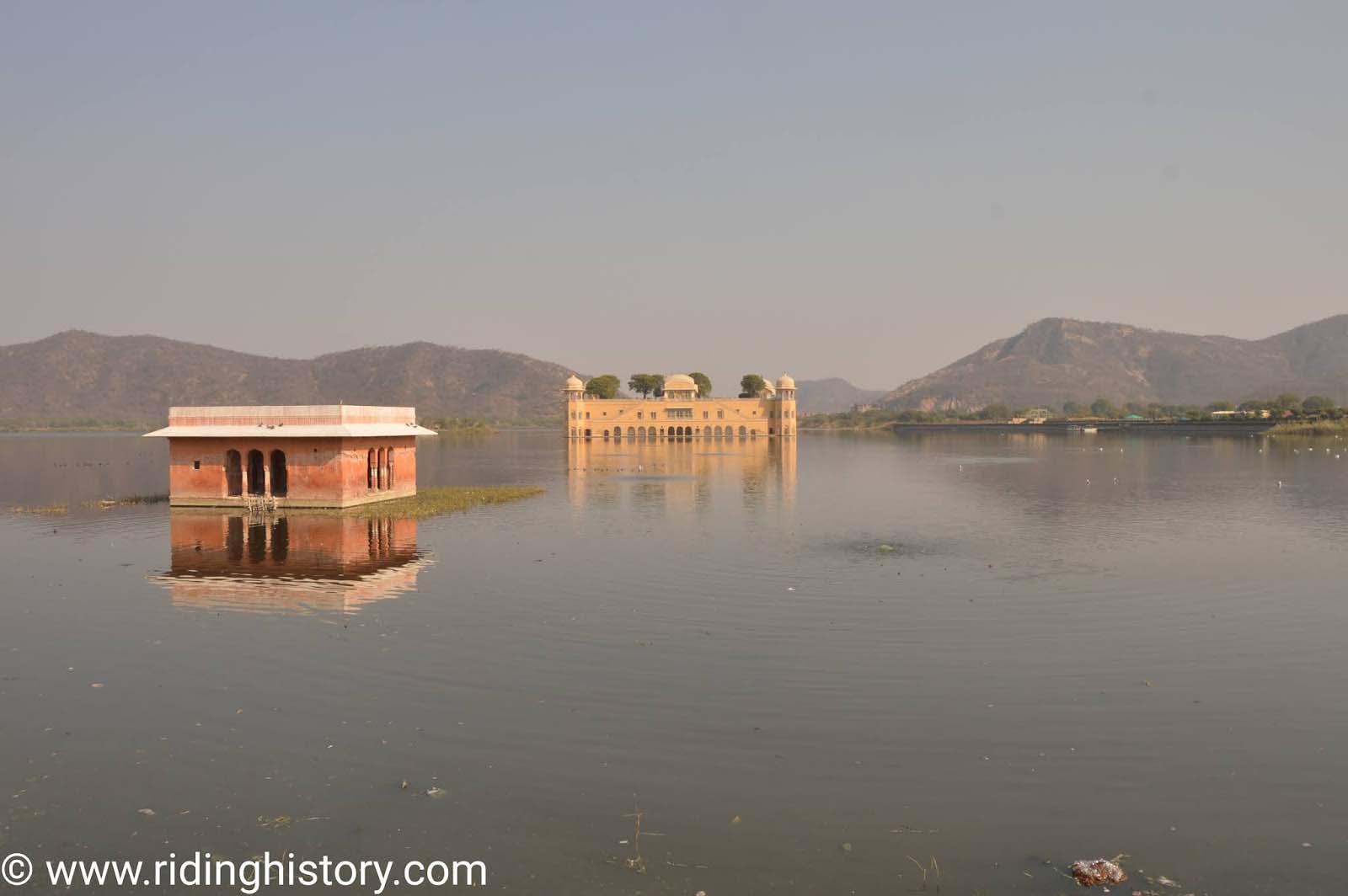
One of the most visited tourist places in Jaipur, Jalmahal is a very beautiful historical palace built in the middle of Mansagar Lake. Sawai Jai Singh built this palace in 1799 and its construction arches, bastions and chhatris-like medieval palaces have been built. Jal Mahal is a double-storeyed building built in square form.
Sawai Jaisingh conducted Ashwamedha Yagya. After the Yajna, the Jalmahal was built in the middle of the lake for bathing with the Pandits and their queens in the Mansagar lake. For the construction of Jalmahal, Mansagar Lake was first constructed by constructing a dam on the Darbhawati River flowing at that time.
The Rajput-style boats were used to construct the Jalmahal in the lake. Jal Mahal was used during the royal festivals and was also used by the kings to spend private time with their queen. Even in the summer season, this palace remains quite cold as some of the floors of this palace have also been built underwater.
The palace built in the middle of the lake during the moonlight night looks like an imaginary place. Presently, Jalmahal is being developed as a bird sanctuary. Nearly 1 lakh trees have been planted in the nursery built near Jalmahal and the tallest trees in Rajasthan are also found in this nursery. Entrance to the Jalmahal is free and you can visit the Jalmahal at any time of the day.
Kanak Vrindavan
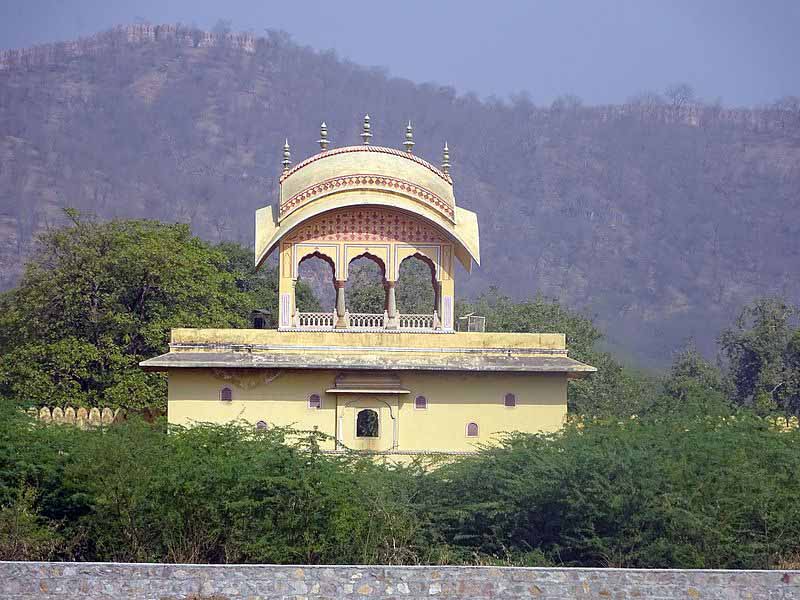
Kanak Vrindavan Valley, built 280 years ago, is today the favourite picnic spot for the local people of Jaipur. People of all age groups like to visit Kanak Vrindavan Valley whether children, old, family, couples or newly married couples all like to spend time here.
Maharaja Sawai Jai Singh named this garden Kanak Vrindavan The history of Kanak Vrindavan Valley located near Jal Mahal is very interesting. When The deity of Lord Govinddevji from Vrindavan was brought to Jaipur by rescuing foreign Turk invaders, then Maharaja Sawai Jai Singh performed the Ashwamedha Yagna at this place and installed the idol of the Lord in a grand temple.
The Deity of Lord Govinddevji was brought to the grove of Vrindavan, hence the name of this valley was named Kanaka Vrindavan. The temple of Lord Krishna in Kanaka Vrindavan is still located today. Many statues have been made inside the garden, dancing in different postures with the gopis of Lord Krishna.
Kanak Vrindavan garden is not built on a flat plane, but it is situated in the valley of Aravalli ranges located in Amer, so it becomes difficult to distinguish the van area and the garden. Mansagar Lake and Jalmahal are situated near Kanak Vrindavan, due to which the beauty of this place increases manifold. Tourists can visit Kanak Vrindavan from 8:00 am to 5:00 pm and the entry fee has been fixed at INR 20/-.
Govind Devji Temple
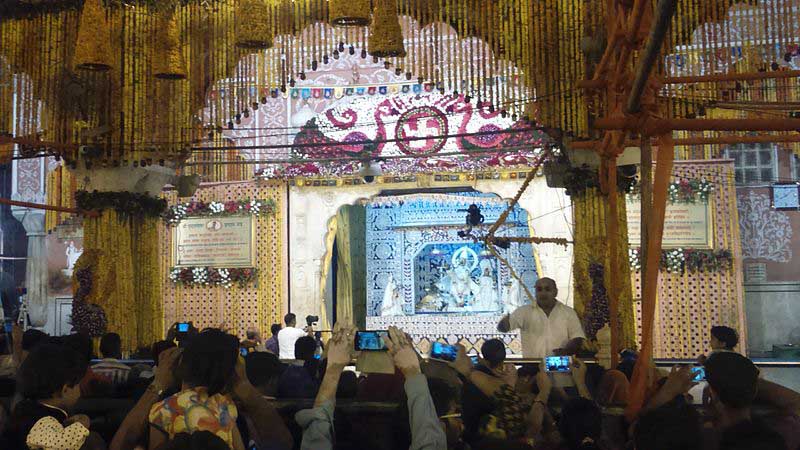
The temple of Govinddevji dedicated to Lord Krishna, located in Jaipur, is a temple without a pinnacle. Almost thousands of native and foreign devotees visit here. Apart from being a famous temple of Jaipur, this temple is also a delightful place in terms of tourism.
More famous than this temple is the history of the establishment of the Vigraha (statue) of Lord Krishna (Govind Dev Ji) sitting in this temple. In 1669, the Mughal invader Aurangzeb, who came from outside, was engaged in destroying Hindu temples all over India.
Then the priests of Vrindavan hid the deity (statue) of Lord Krishna (Govindadeva) in another palace to save it from being destroyed by Aurangzeb. In 1714, Maharaja Sawai Jai Singh II of Jaipur brought the Deity of Lord Krishna from Vrindavan to Amer and established it on the banks of the Darbhavati River in the valley near Amer.
Today this place is known as Kanaka Vrindavan. It is believed that when the construction work of Jaipur city was going on during the time of Maharaja Sawai Jai Singh II, the residence of the Maharaja was Suraj Mahal. Suraj Mahal lies between Badal Mahal and Chandra Mahal.
It is said that Maharaja Sawai Jai Singh II is seen one night in a dream that the palace in which he resides is the place of Lord Krishna. Immediately after that dream, the Maharaja transfers his place of residence to Chandra Mahal.
And in 1735 the Deity of Lord Krishna from Kanaka Vrindavan is established in the Suraj Mahal. From that time onwards Suraj Mahal came to be known as Govinddevji. In a separate post, I will give you all the information related to the temple of Govinddev Ji.
City Palace
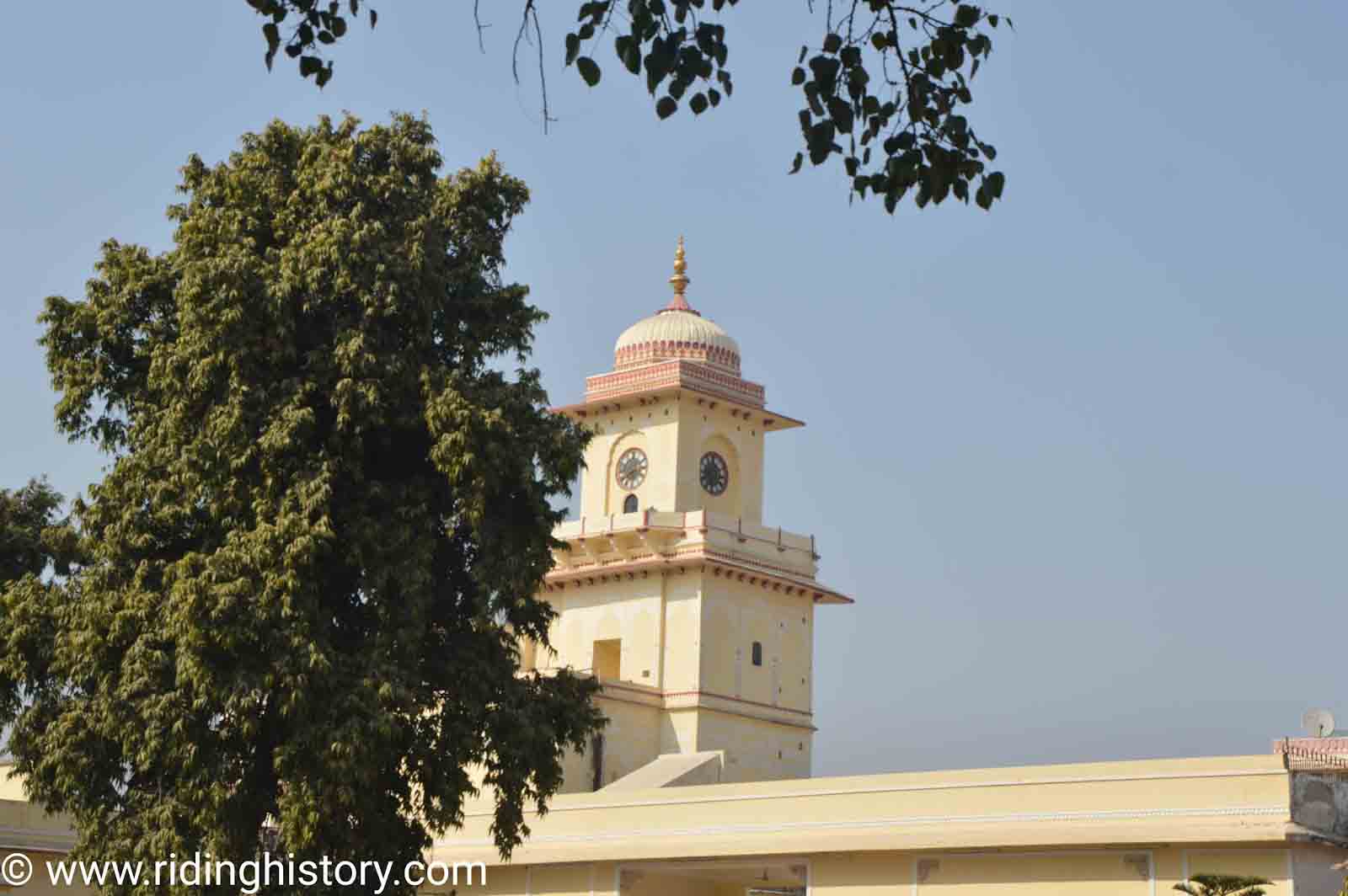
The City Palace was built between 1729 and 1732 by Maharaja Sawai Jai Singh with the help of the then-famous architect Vidyadhar Bhattacharya and the English craftsman Sir Samuel Swinton Jacob. The City Palace is a very beautiful and well-equipped Raj Prasad with all kinds of security and facilities.
Many beautiful and fine buildings, magnificent gardens and huge courtyards were constructed on the premises of the City Palace from time to time. The Rajput, Mughal and European architectural styles of the City Palace have been wonderfully used. Made of red and pink stones the handwork done on the City Palace captivates every visitor.
The most famous in the City Palace are buildings like “Chandramahal” and “Mubarak Mahal”. The Chandramahal is a seven-story building that is currently the residence of the Raj family, built in the shape of a crown, the Raj Bhawan has a distinct identity due to its architecture.
The Mubarak Mahal near the entrance to the City Palace was built in the 19th century when the building was used as a reception. Presently Mubarak Mahal has been converted into a museum dedicated to its creator Sawai Madho Singh. The museum showcases Banarasi sarees, Pashmina shawls and royal dresses worn by Sawai Madho Singh for tourists.
The weapons used by the ancient Rajput warriors are displayed to tourists in the Maharani Palace located on the premises of the City Palace. In the museum, tourists can see ancient weapons like ivory swords, guns, poisoned blades, and cannons. Tourists can visit the City palace from 9:30 am to 5:00 pm.
The entry fee for domestic tourists has been set at 75 INR and for foreign tourists, the entry fee has been set at 300 INR. The entrance fee for Indian students has been fixed at 40 INR.
Jantar-Mantar Jaipur
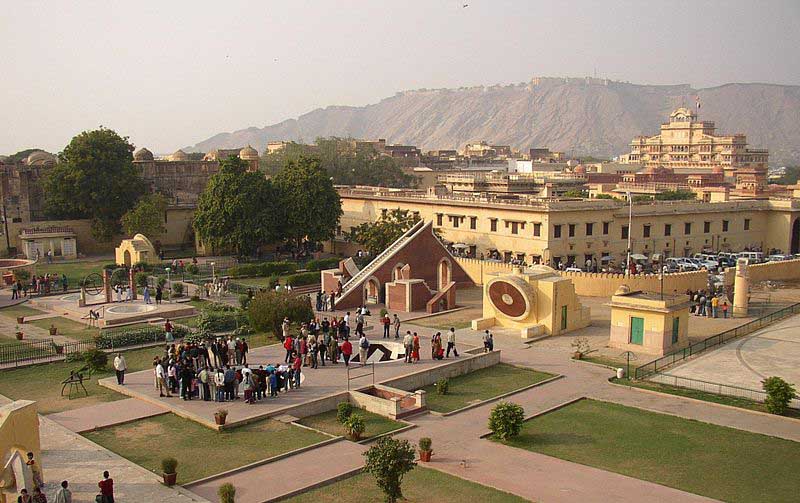
Sawai Jai Singh II, the founder of Jaipur, had a great interest in astronomy and was also a great astronomer himself. During his reign, Sawai Jai Singh II built five astronomical observatories. These five observatories were constructed in Jaipur, Delhi, Ujjain, Banaras, and Mathura respectively with the help of the great astronomers of the country, the first of which the observatory was built in Ujjain which was called “Emperor Yantra”.
The second observatory constructed in Delhi is called Jantar Mantar. The observatory at Jaipur was built after the construction of these two observatories. At present, only two observatories exist, one remains in Connaught Palace in Delhi, also called Jantar Mantar. Jantar Mantar, built in Jaipur is the largest of all the rest of the observatories and because of this, it took the most time to build.
The construction of this observatory was started by Sawai Jai Singh II in 1724 and the construction of this observatory continued till 1734. Sawai Jai Singh sent his messengers to the countries of the whole world for the construction of this observatory and got manuscripts related to astronomy and got them translated. 14 astronomical counting instruments have been built at Jantar in Jaipur.
These instruments were used to measure the exact time, know the position of planets, predict eclipses and get accurate information about monsoons. Even today, the local almanack of Jaipur is published based on the calculations of instruments made at Jantar Mantar. Local astronomers predict the rain coming to and around Jaipur by the “wind perception” process. “Samrat Yantra” at Jantar Mantar This is a huge sun clock which is also the highest yantra here, its height is 90 feet.
Apart from this yantra, “Jayaprakash Yantra” and “Rama Yantra” are the most famous. On 1 August 2010, Jantar-Mantar Jaipur was granted World Heritage status at the 34th meeting of the UNESCO World Heritage Committee in Brasilia, the capital of Brazil.
Jantar-Mantar Jaipur, Rajasthan is the first to have a World Heritage name and the 23rd cultural heritage of India. Jantar Mantar is open all week from 9:00 am to 4:30 pm. The entry fee for Indian tourists at Jantar Mantar has been set at INR 50 / – and the entry fee for foreign tourists has been set at INR 200 / -. The admission fee for Indian students has been fixed at INR 15 / -.
Hawa Mahal
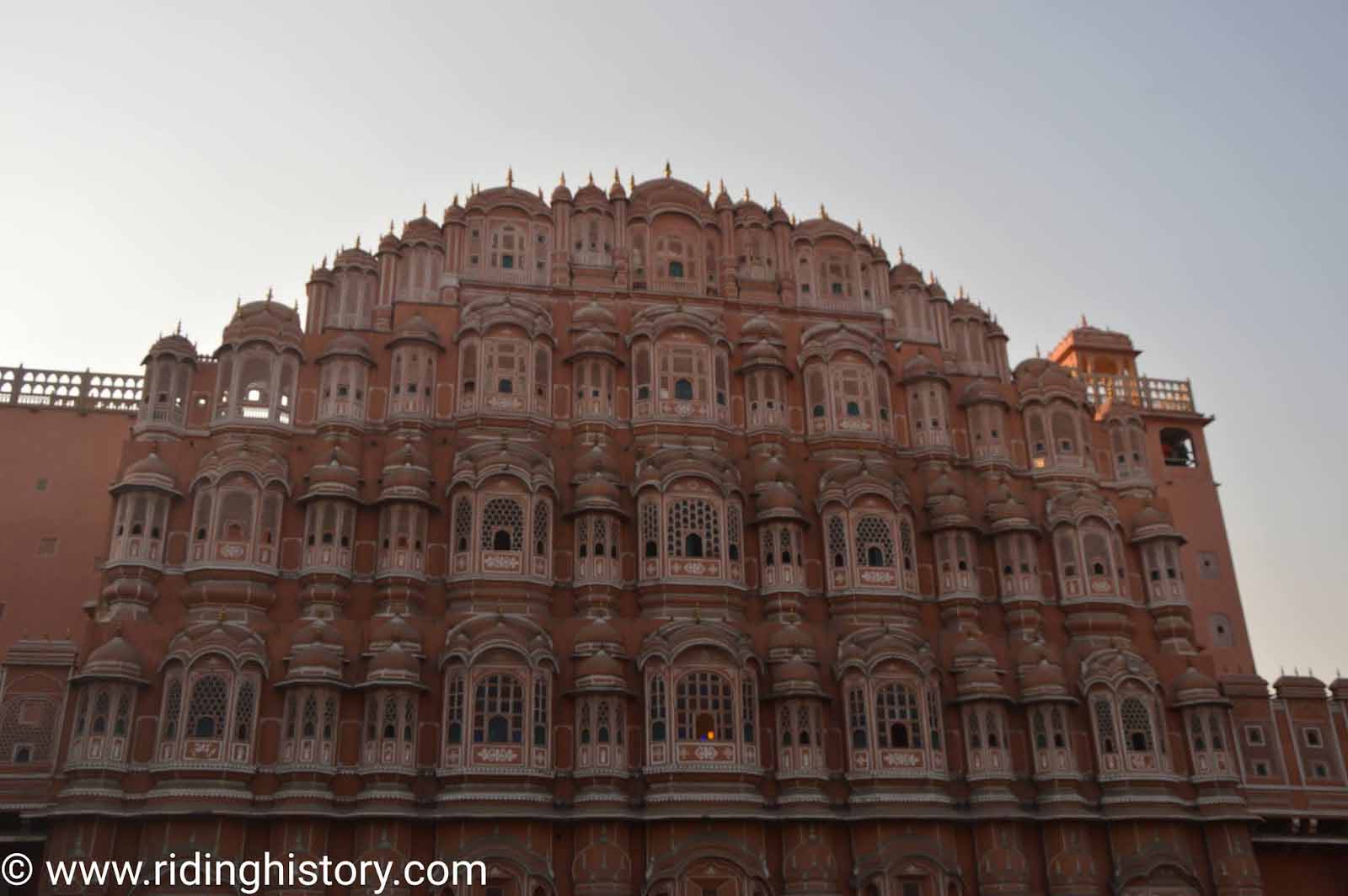
Every tourist coming to Jaipur will stand near the Hawa Mahal, either take his or her selfie or take his / her photo of any person walking along the path. All professional photographers coming to Jaipur show the beauty of Hawa Mahal in their way and hence it is also known as the pride of Jaipur.
Hawa Mahal is the favourite and most famous tourist destination of Jaipur and its full credit should be given to the unique confluence of Hindu Rajput craftsmanship and Mughal style. The magnificent palace that looks like this Rajmukut was built in 1799 by Maharaja Sawai Pratap Singh.
The architect of the construction of this palace was entrusted to the architect Lal Chand Usta. Hawa Mahal is a five-story building whose width decreases after each floor, the width of the top floor is only one and a half feet. The height of this five-story building is 50 feet from the ground and the width of the three floors above it is equal to that of a room and there is an open courtyard in the back of both the lower floors.
At that time, the ladies of the royal family wore long and besieged skirts, so the hoofs were constructed instead of the stairs to climb the top two floors of the Hawa Mahal so that there would not be any inconvenience in going upstairs. The biggest feature of Hawamahal is the jharokhas made in it and the number of jharokhas made in this palace.
The total number of vents in Hawa Mahal is 953, which is many times more than the vents made in any big palace and these 953 jharokhas increase the level of beauty of this air palace. The root cause of the creation of these shackles is believed to be the “curtain practice” prevalent at that time, all the women of the royal family followed this social system strictly at that time.
The women of the royal family were able to see the bustle of Jaipur market from these vents, the routine of ordinary citizens and the tableaux that came out from here, so these vents were constructed. Apart from this, cool air always flows from these vents and due to this, the atmosphere of this palace remains cool and air-conditioned even during the very hot summer.
Another feature of Hawa Mahal is that a person sitting inside can monitor the activities going on outside, but it is impossible to see any person sitting inside from outside. Hawa Mahal is open to tourists throughout the week and is open from 9:00 am to 5:00 pm. An entry fee of INR 50 / – has been set for Indian tourists and INR 200 / – for foreign tourists. The entrance fee for Indian students has been fixed at INR 20 / -.
Isarlat (Sargasuli)
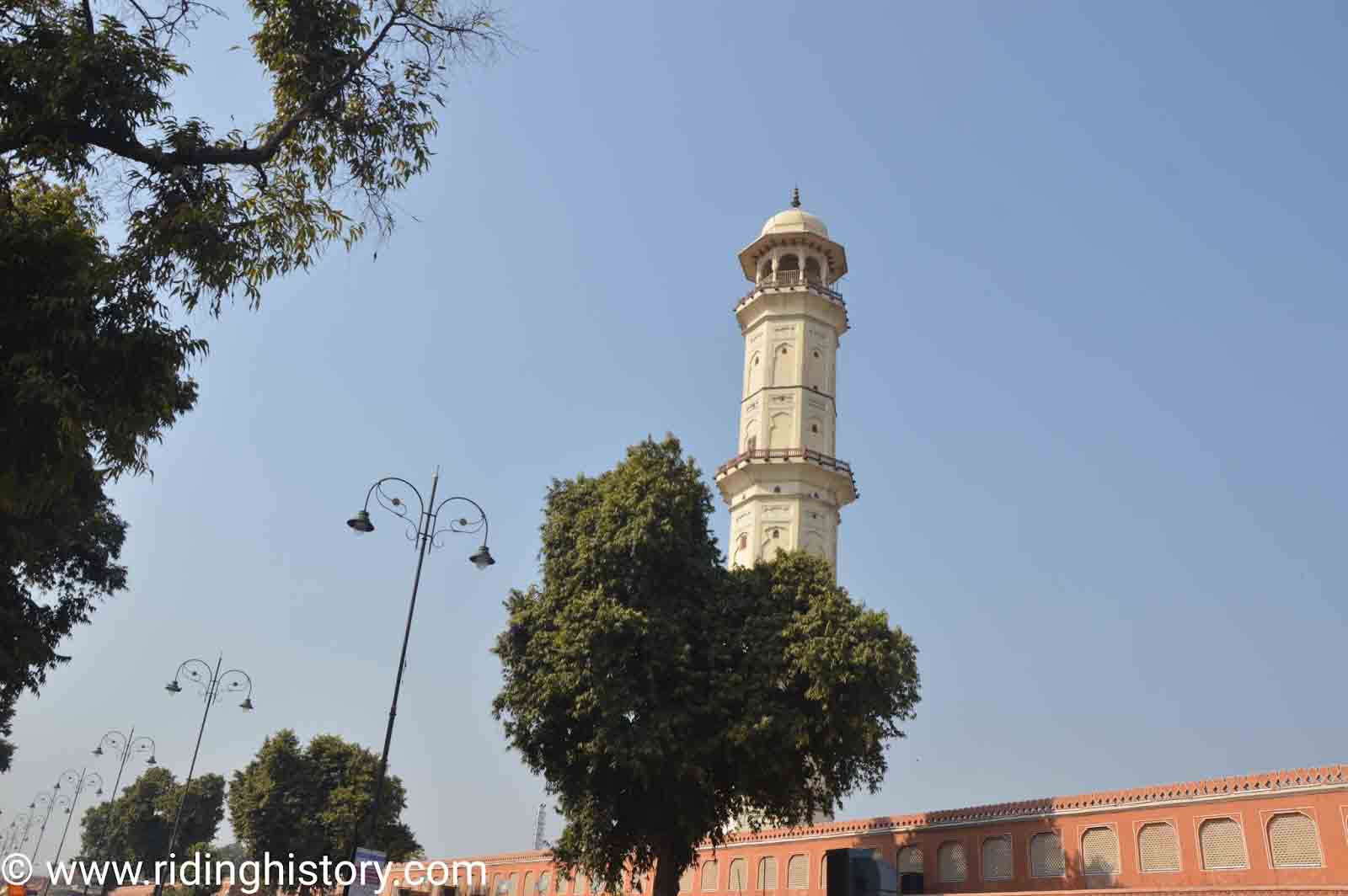
This is the only tower in Jaipur whose colour is yellow, the rest of the city will be painted pink. The seven-storeyed tower was built by Maharaja Ishwar Singh in 1749 after his step-brother Madhosingh was defeated twice in the war. The height of this tower is about 140 feet and 264 stairs have been built for climbing up.
Isarlat of this tower has been named after Maharaja Ishwar Singh. At that time, upon reaching the top floor of this tower, it felt like you could touch heaven, so the locals started saying Sargasuli. In Jaipur, this tower starts from the Tripolia market but this tower is located above the shops built in Aatish Bazaar, behind the Tripolia market.
Isarlat is an octagonal tower, its map was created by Maharaja Ishwar Singh’s royalty Ganesh Khwan. The entrance to Isarlat is narrow and the staircase inside the tower is narrow and circular. A door is made on each floor of the tower and opens towards the balcony to look out from the tower.
This tower is an unmatched blend of Hindu Rajput craftsmanship and Mughal style. An umbrella has been constructed on the top floor of this tower, from there, tourists get to see a very beautiful view of Jaipur.
The entrance fee of Isarlat Minar has been kept at INR 50 / – for Indian tourists and for foreign tourists the entrance fee of this tower has been kept at INR 200 / -. The entry fee for Indian students has been fixed at Rs.5 / -. Tourists can see this tower from 9:00 am to 4:30 pm.
Tripolia Market
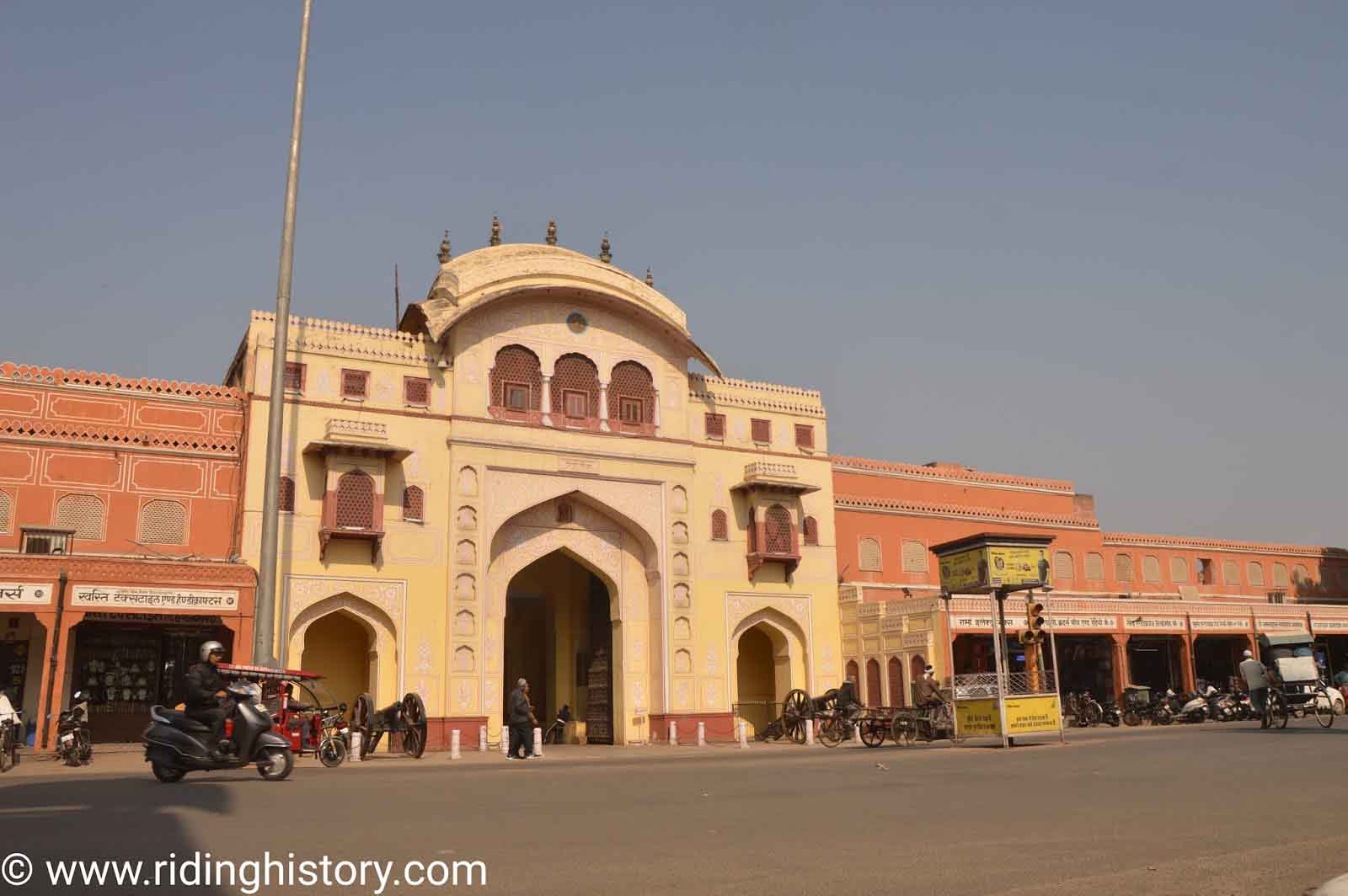
When the city of Jaipur was built, this city was the most settled city at that time. Therefore, when the construction of this city started, special care was also taken that the city should also have a suitable place for traders to do business. Therefore, special attention was paid to widening the roads and roads of this city.
The main trading center of the city was Tripolia Bazar and its width was 107 feet. Chaupars were built on both sides of the Tripolia market, which are today called “Badi Chaupar” and “Chhoti Chaupar”. Chaupar was not built at Tripolia Bazar but an open square was placed at the front. The market in front of the Tripolia market is called a “wide path”.
On both sides of the main market, buildings were constructed because of the market and special attention was given to the fact that the height of all the buildings should be the same. The Tripolia market built inside the parkota in Jaipur is still the main centre of trade in this city. Whenever you come to Jaipur, you must walk around the market built around the Tripolia market.
Anokhi Museum of Hand Printing Jaipur
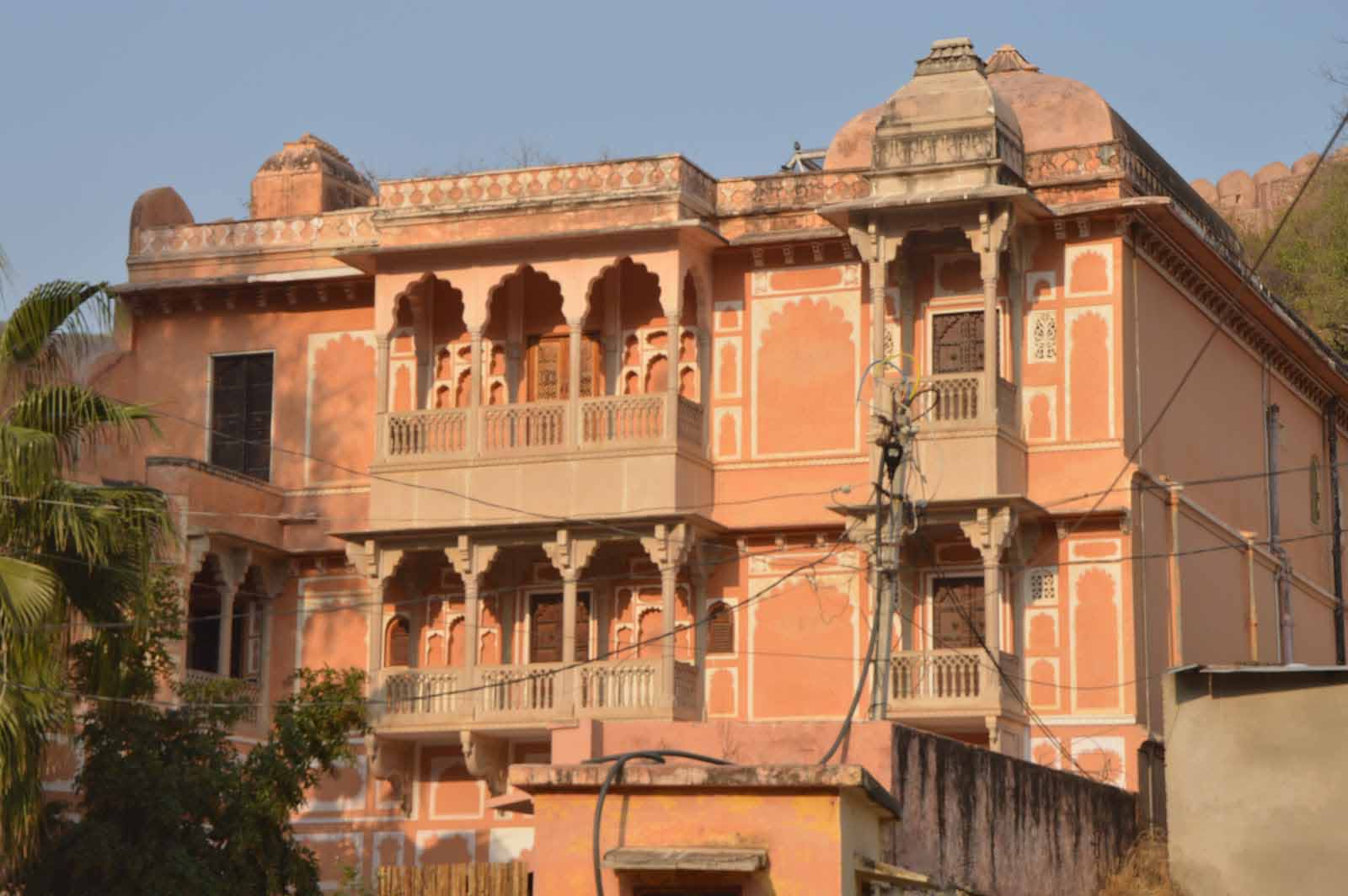
The Anokhi Museum of Hand Printing near Amer Fort was inaugurated in 2005. The main objective of opening this museum located in Jaipur was to collect the art of handblock prints in Jaipur and preserve the old customs of the artisans associated with this art.
More than a hundred hand-block-printed vintage clothes have been preserved to showcase the art of hand-block print for tourists in the Anokhi Museum. Apart from this, this Museum also showcases the tools of artisans and the design of handblocks made of wood. The design is engraved on a piece of wood to print the handbook on the fabric.
This process is very fine and complex. After years of hard work, a worker can make a handblock design on a piece of wood. Presently this museum remains a centre of attraction for art lovers, and Indian and foreign tourists. The Anokhi Museum is open from Tuesday to Saturday in the museum week.
The museum visiting time is from 10:00 am to 5:30 pm. The opening hours of the museum are scheduled on Sunday from 11:00 am to 4:30 pm. The museum is closed on Mondays and national holidays.
The entrance fee of the museum has been set at INR 30 / – for tourists and INR 20 / – for students. The entrance fee for young children is 15 / – INR. The camera fee is 50 / – and the Videography fee is 150 / -.
Nahargarh Biological Zoo
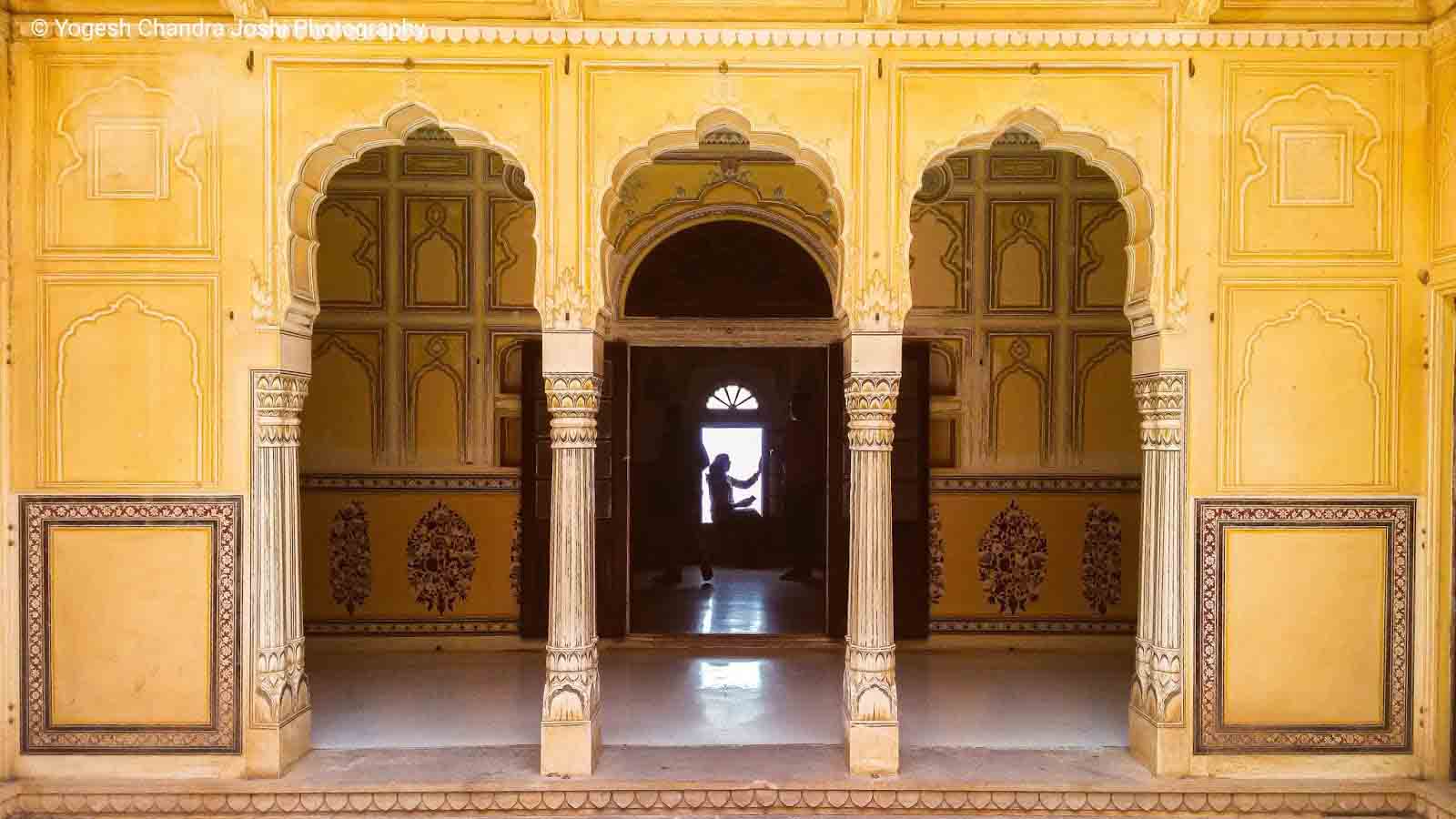
Construction of Jaipur-based Nahargarh, Biological Zoo started in 2013, and in 2016 the park was inaugurated by Chief Minister Vasundhara Raje. Spread over 720 acres, Nahargarh Biological Zoo has been constructed in the Aravalli ranges, due to this, the garden is also very rich in terms of vegetation.
Apart from wild animals, this Biological Park is also home to 285 species of birds. In Nahargarh Biological Zoo, tourists see wildlife such as the Asiatic lion, Bengal tiger, leopard, sloth bear, deer, crocodile, pangolin, jackal, wild dog, wolf, hyena, fox, rhesus monkey, and langur.
Nahargarh Biological Park is closed on weekdays on Tuesdays and is open from 8:00 am to 5:30 pm for the rest of the week. 50 / – INR has been set for Indian tourists at Nahargarh Biological Park and INR 20 / – for Indian students. Admission for children under 7 is free. If Indian tourists use the camera, the fee has been fixed at INR 200 / – and INR 500 / – is payable for videography.
The entry fee for foreign tourists is fixed at INR 300 / – and the camera fee is kept at 400 / – Videography fee is INR 1000 / -. Vehicle parking fee has also been fixed for vehicles coming to the park, two-wheeler parking is payable 30 / -INR, four-wheeler parking 300 / – INR, auto-rickshaw parking 60 / – INR and bus parking 500 / – INR.
Garh Ganesh Temple
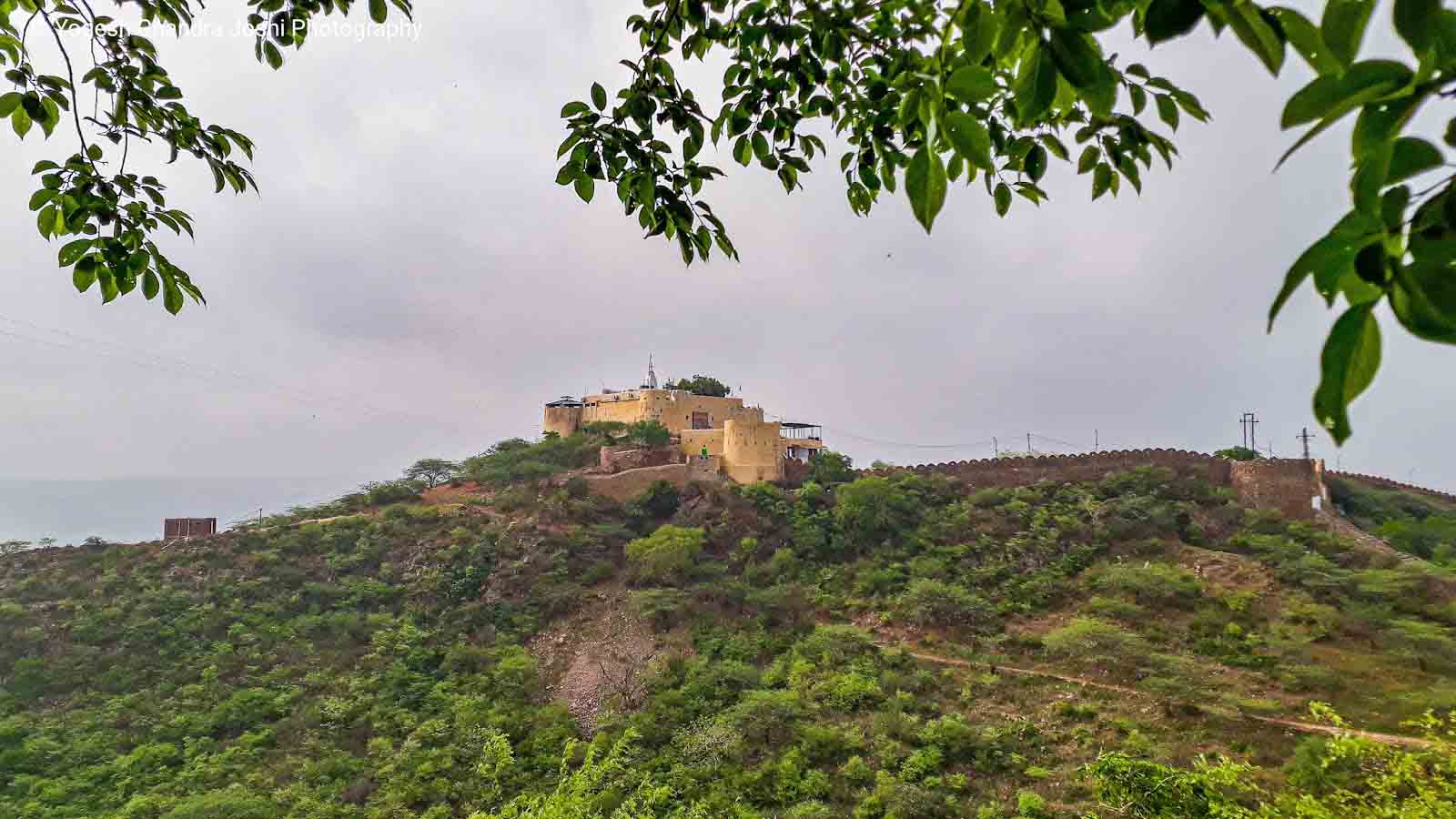
This Ganesh temple, built on the Aravalli ranges in the western part of the city of Jaipur is an ancient temple built in princely times. The temple building was built in the shape of a stronghold, so this temple is called Garh Ganesh. For the 290-year-old Ganesh temple, it is said that the foundation of the construction of Jaipur city was filled with blessings from this temple.
It is the only Ganesh temple in the world in which the idol of Lord Ganesha has been installed without a trunk. A statue of the child form of Lord Ganesha has been installed inside the temple, hence this temple is also famous among the residents as the trunkless Ganesha.
There are two Deities of Lord Ganesha in the temple, in which the first Deity is constructed from the root of the data and the second Deity is established by the Ashwamedha yagna performed by Sawai Jai Singh. Sawai Jaisingh had duly installed Ganesh Lord’s child form in this temple after Ashwamedha Yagya.
The idol of Lord Ganesha has been installed in the temple in such a way that one can see God with the help of binoculars from Chandra Mahal, located near the City Palace. Two moons have also been made in the temple premises. It is believed that when you convey your wishes in the ear of a mouse, the wishes of the devotees reach the child Ganesha. To reach the temple one has to climb 365 stairs.
The steps leading to the temple represent the whole year. An ancient Shiva temple is also built on the way to the temple. The entire family of Lord Shiva is seated in this Shiva temple. Any type of photography is prohibited in the temple. Standing near the temple gives a very panoramic view of the old Jaipur city and the new Jaipur city. Seeing the city of Jaipur bathed with light at night from the temple also gives a different experience.
Gator Chhatris
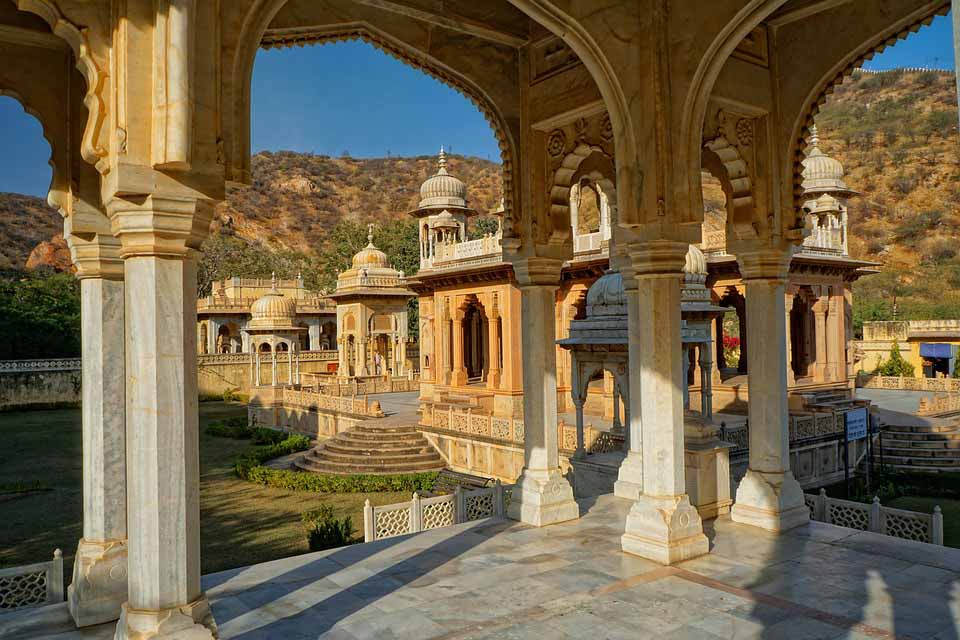
Gator in Jaipur is a place where umbrellas are built in memory of the late rulers who ruled this place and their last rites are also performed at this place. Chhatris made in Gator represents a beautiful example of the ancient art of Rajasthan, in addition to this, items connected with archaeological importance have been found at this place.
The most famous and most beautiful of the Gator umbrellas is the umbrella of Maharaja Sawai Jai Singh, a replica of this umbrella is also found in the “Kensingal Museum” in London. Gator is the royal cremation ghat of Jaipur royal house. All the kings from Sawai Maharaja Jai Singh have been cremated in this royal crematorium ghat and their umbrella has been constructed.
But the last rites of Maharaja Ishwar Singh have not been performed at Gator and neither has his umbrella been erected at this place. The last rites of Maharaja Ishwar Singh were performed near Tal-Katora and his umbrella was constructed at the same place.
Sawai Mansingh II Museum
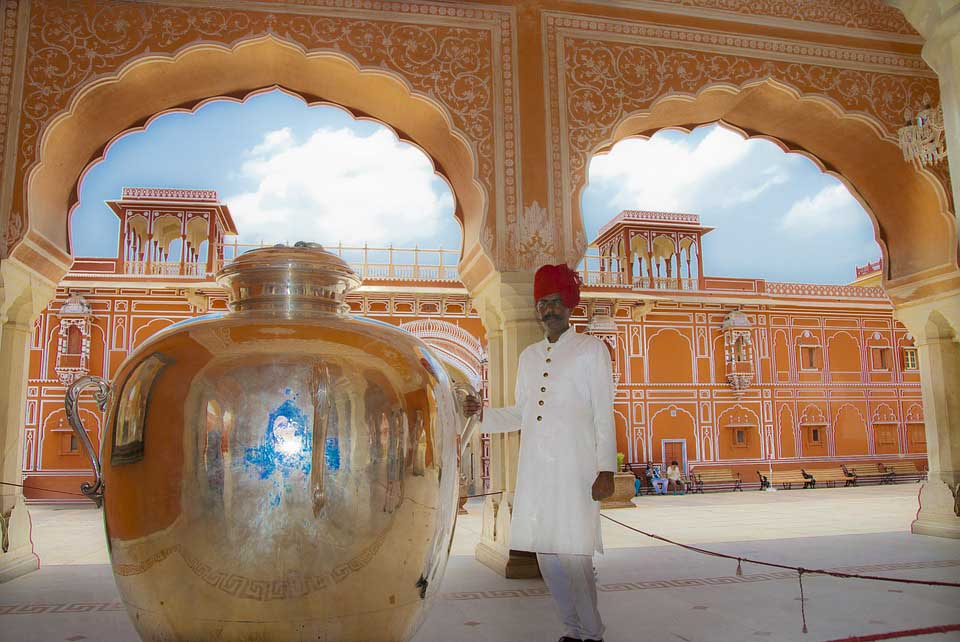
All the rulers of the Kachhwaha Rajput dynasty of Amer served as the Mansabdars of the Mughals until the 16th and 18th centuries and during this time all the Rajput kings of Amber and Jaipur got the opportunity to work in different parts of the country.
During their tours, the kings of Amer started collecting material associated with paintings, deities, weapons, and antiquities of different places and regions. Shortly after, a rare collection of sorts was developed in the palaces of Amer and Jaipur.
In the 18th century, during his reign, Maharaja Sawai Jai Singh II established 34 factories for the protection of handicrafts and other artists in the state to run the state system smoothly and named all those factories according to different departments. Some factories were also built to make art materials related to handicrafts, due to this, the handicrafts sector of Jaipur grew a lot.
The Mughals and the British also presented a lot of gifts to the Rajput rulers of Jaipur from time to time, even today these gifts adorn the royal family. Sawai Mansingh II established this invaluable heritage inside the City Palace in 1959 as an art museum and opened it for general public viewing.
Brigadier Bhavani Singh, the successor of Sawai Mansingh II, renamed the museum as the “Sawai Mansingh II Museum” in 1972 and part of the City Palace and its collection of weapons, wagons, tapirs, antiquities, carpets, and textiles were added to this museum. Gave it as a gift.
To Be Continued for Part-02
Best places to visit around Jaipur
Ranthambore Fort, Ranthambore National Park, Kota, Keoladeo dense bird sanctuary, Sariska Tiger Reserve, besides Uttar Pradesh is also a nearby state where Mathura, Vrindavan, and Agra can also be visited.

